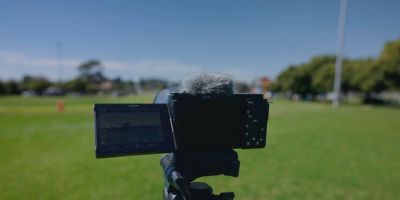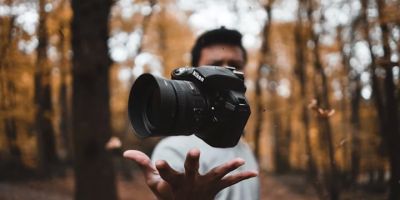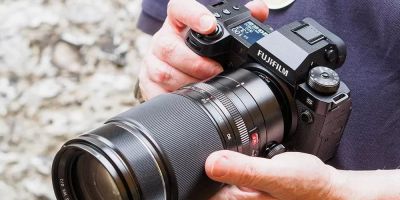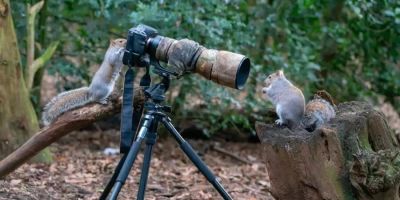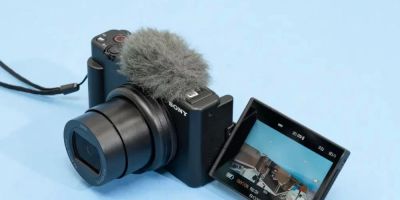- 1-The-Rise-of-4K-Video-Recording-and-Slow-Motion-in-Cameras
- 2-Why-Choose-a-Camera-with-4K-Video-Recording-and-Slow-Motion-Features
- 3-Key-Technical-Features-to-Look-For
- 4-Real-World-Applications-of-4K-Slow-Motion-Video
- 5-How-to-Maximize-Your-Camera-for-4K-and-Slow-Motion
- 6-Choosing-the-Right-Camera-with-4K-and-Slow-Motion-for-You
1. The Rise of 4K Video Recording and Slow Motion in Cameras
In recent years, the demand for cameras with 4K video recording and slow motion features has skyrocketed. The advancement of technology has made it possible for both professional filmmakers and hobbyists to create cinematic-quality videos with crisp detail and dynamic motion effects. 4K resolution offers four times the pixel count of traditional HD, allowing for stunningly sharp visuals that are ideal for everything from nature documentaries to wedding films.
Slow motion capability enhances storytelling by slowing down fast-moving scenes, revealing details that are otherwise missed by the naked eye. Combined, these features empower creators to elevate their content quality significantly, making cameras with these capabilities a must-have in today’s digital age.
2. Why Choose a Camera with 4K Video Recording and Slow Motion Features
Opting for a camera with 4K video recording and slow motion features offers several creative and practical advantages. The high resolution of 4K video provides extraordinary clarity and allows for cropping and zooming in post-production without losing detail. This flexibility is invaluable for content creators who want to fine-tune their footage.
Slow motion features enable capturing movements with exquisite detail and dramatic effect, perfect for sports, wildlife, dance, and action shots. This capability transforms ordinary scenes into mesmerizing visual experiences, capturing emotions and action in ways that normal speed footage cannot.
Moreover, many cameras with these features offer advanced autofocus systems, image stabilization, and enhanced color profiles, further improving video quality and user experience.
3. Key Technical Features to Look For
When choosing a camera with 4K video recording and slow motion capabilities, consider the following technical specifications:
• Frame Rates: Look for cameras that support at least 30fps in 4K for smooth video, and 120fps or higher for slow motion at lower resolutions.
• Sensor Size: Larger sensors like APS-C or full-frame sensors capture better low-light performance and dynamic range, enhancing video quality.
• Bitrate and Codec: Higher bitrate and efficient codecs like H.265 ensure higher quality footage with manageable file sizes.
• Image Stabilization: Optical or in-body stabilization is crucial for smooth handheld footage, especially during slow motion sequences.
• Audio Inputs: Quality audio recording is vital for video production; look for cameras with microphone inputs or support for external audio devices.
Understanding these features helps in selecting a camera that matches your filming needs and creative goals.
4. Real-World Applications of 4K Slow Motion Video
Various professionals and enthusiasts use cameras with 4K video recording and slow motion features to capture unique moments. For instance, sports videographers slow down fast actions like a sprinter’s stride or a basketball dunk to analyze technique or create dramatic highlight reels.
Nature filmmakers use these features to reveal intricate animal behaviors or natural phenomena such as hummingbird wing flutters or water droplets forming ripples, enhancing the audience’s connection to the scene.
Wedding and event videographers also benefit by capturing emotional moments in slow motion, adding a cinematic touch to storytelling. Social media influencers use these features to produce eye-catching content that stands out in crowded digital spaces.
5. How to Maximize Your Camera for 4K and Slow Motion
To fully leverage a camera’s 4K video recording and slow motion capabilities, consider these practical tips:
• Use high-speed memory cards that support fast data writing to avoid dropped frames and recording interruptions.
• Pay attention to lighting; adequate lighting improves clarity and reduces noise in high-resolution slow motion footage.
• Utilize manual focus or focus peaking to maintain sharpness on moving subjects during slow motion.
• Stabilize your camera with gimbals or tripods to achieve smoother shots.
• Experiment with frame rates and shutter speeds to find the perfect balance between motion blur and sharpness.
These techniques ensure your videos look professional and polished.
6. Choosing the Right Camera with 4K and Slow Motion for You
Selecting the perfect camera depends on your budget, skill level, and creative ambitions. Entry-level cameras with 4K and slow motion offer impressive features at accessible prices, ideal for beginners exploring video creation. Mid-range and professional cameras provide superior sensor quality, advanced autofocus, and robust build quality suited for demanding projects.
For example, popular models like the Sony Alpha series, Panasonic Lumix, and Canon EOS R line are widely acclaimed for their 4K slow motion performance and versatile video features.
If you’re unsure where to start, Photo Studio offers expert advice and a curated selection of cameras with 4K video recording and slow motion capabilities, helping you find the best fit for your needs.

